You don’t have to rack your brains trying to come up with a totally new idea just to have a product. As they say, necessity is the mother of invention. You need only to take on some of the existing problems you find and offer a solution. That is what Jay Baker did. He is the President of Jamestown Plastics—a 60+ year old plastics manufacturing company based in the USA. As an inventor holding more than 40 USA and international patents, Jay has created the world’s first Certified Child Resistant clamshell container called the ‘Clamtainer’. In this episode, he joins Dr. Diane Hamilton to share how he came up with this innovative product, taking us into the world of innovation, patents, marketing, and more. He also lets us in on his previous inventions and the lessons he learned all throughout.
—
From one invention to another, Dr. Diane also sits down with Kyle Valery and Chris Wilke. This time, in the world of fitness. Kyle and Chris are co-founders of Stretch Affect, a human performance company that helps people with their health and fitness goals. Here, they share with Dr. Diane how they are faring in this pandemic—what challenges they are facing and what experiences, both good and bad, helped their business. They also talk about the role of psychology in fitness and working with people who want to become high-performers.
I’m glad you joined us because we have Jay Baker, Kyle Valery, and Chris Wilke here. Jay is the President of Jamestown Plastics. Kyle and Chris are Cofounders of Stretch Affect. They’re all are entrepreneurs and have started amazing businesses. We’re going to talk to them about their journey.
—
Watch the episode here:
Listen to the podcast here
Navigating The World Of Patents With Jay Baker
I am here with Jay Baker, who is the President of Jamestown Plastics, a many-year-old plastics manufacturing company based in the US. He’s an inventor who holds more than 40 USA and international patents, including the Clamtainer, which is the world’s first certified child-resistant clamshell container. I’m very excited to have you here, Jay. Welcome.
Thank you so much for having me. I’m tickled pink.
It is going to be exciting to know about some of the things that you’ve created. I love innovative ideas. I teach a lot of courses. I’m teaching one right now on entrepreneurship at a technology school where they have to come up with different products. That’s a hard thing to do and you have to have a sense of creativity and curiosity. I want to get a backstory on you to what led to your interest in creating all these things.
My father’s messy garage and a broken bicycle.
Those things will do it. You had influence from your childhood. I want to know.
I say that, not tongue in cheek. I have been in education also on the school board. I’m retired after 25 years, created a technology and manufacturing program in the school district that I helped form years ago because of seeing a severe lack, at least in the New York State education realm, of not addressing the needs of manufacturers and the trades. I probably got frustrated and said, “We’re going to do this,” and did it. It’s an amazingly successful program. What I will tell the kids is that, “In this age of the internet where everything’s a Google click away, all the answers are right there, they’re not necessarily all right there. Especially when you’re delving in, when you’re young, first of all, don’t throw the baby out with the bathwater.”
If It’s a crazy idea, you’re thinking, “Let’s try it. Let’s see.” Do that. Give it a go. It’s exploration and invention. I would tell them that what I created had some DNA. I had a grandfather that was a self-taught auto mechanic. There was some real mechanical aptitude within the gene pool on both sides of my family, but my dad had a messy garage and like we talked about the messy desk in creativity. I would be an 8 or 9-year-old kid and something breaks on my bike. I’m like, “I want to go biking.” I can’t figure out, so I go into the garage. It’s like, “The exact part I need is not here. I still want to go ride my bike today.” The only way that’s going to happen is if like cobble something together out of this bunch of crazy stuff that’s all around me. That has been the way my mind works in a lot of different things. There are certainly mechanical things for the rest of my life.
You must love 3D printers and you can come up with whatever part you need. Are you into that at all?
We are. Personally, I’m the guy that keeps away from anything electronic because I have this force field. A piece of equipment in one of my factories could be running like clockwork. I stop in talk to the employee and the whole thing goes ka-flunk.
That’s so you can put it back together.
Technologically, I’m not that skilled at all. I love the 3D printing revolution and what I love the most about it is in this program that I helped start in our high school at Chautauqua Lake Central School, they have four 3D printers. These kids can design something on the screen, send it off to the printer and physically have it in their hands the next morning. In the history of mankind, that’s magic. That would have gotten you burned at stake in 1600 if you did that.
[bctt tweet=”In this age of the internet, where everything’s a Google click away, all the answers are right there.” username=””]The creativity that we see now is so much fun to learn about it. As I was looking at your Clamtainer thing, it reminded me a little bit of a friend of mine, Dr. Gary Witt, here in Arizona created this way to put a childproof cap on a gun, so you couldn’t shoot it because a lot of people weren’t putting their guns in their safes. You have to twist it to get the gun to shoot. Tell me about your child-resistant clamshell container, this Clamtainer, and what are some of the things that led up to that?
The whole invention, needless to say, necessity is the mother of invention, and that’s true for a number of my inventions. It’s not like I’m sitting out having a beer next to the bonfire and all of a sudden, it’s there in all its splendor, full-fledged glory. It’s much more of a grind than that. Typically, there’s a specific issue that needs to be solved. We got to find a different way of solving this issue or a brand-new way. That’s exactly how Clamtainer came to be about.
I was approached probably years ago from an existing customer that wanted a clamshell package that would do all the things that they wanted it to do, yet they wanted to do none of the conventional things for keeping a clamshell together, i.e., snap locks, under cuffs, stretch wrap and then into the stuff that consumers 2 or 1 hate with a passion and they should. A fully-sealed clamshell container that you need a bandsaw to get inside. Here’s the irony. I bought a pair of scissors from the hardware store. I came home, and I needed another pair of scissors to get into the pair of scissors. I’m like, “If this isn’t the definition of lunacy, I don’t know what it is.”
Some of these things like getting into CDs, when you used to buy CDs, it’s painful to get into some of this stuff. I had Jay Samit on the show who is great. He wrote, Disrupt You! and Disrupt Yourself. He was with Sony and all the amazing things he’s created. He was talking about if you write down everything that bugs you during the day, every day for a while, you’re going to find something you could create or come up with a product, company or idea like that. Is that what you do? Are you like, “This drives me crazy, I want to fix it?”
Yes, especially now at this point in my career. I’ve been doing these gigs on a W-2 basis since I was 21. That’s so many years ago than I’d like. Now I have a phenomenal creative staff. They’re all about the mission and get the mission done. It’s afforded me the ability to be the curmudgeonly, old, crazy guy that is walking around Walmart, see something, and goes, “This has been bugging me forever.” Then go back to these wonderful young people that I employ and go, “I got this crazy idea. I got some crazy ways maybe of approaching it, but let’s toss this around.” I’m having the time of my life. People say, “Jay, when are you going to retire?” I don’t play golf because it bores the hell out of me. What I like doing is inventing. I like creating stuff. I’m not planning on it.
You are super curious. I’m with you. I don’t know if I could ever retire. I’ve had creativity, motivation and engagement, all these experts on the show. When I asked them what comes first, they say curiosity. Would you say curiosity leads to creativity? Would you consider yourself curious?
Probably to the point that some of my family members wish I were a little less curious. That’s absolutely the truth.
How did you get that level of curiosity? In my research, I found that everybody’s born very curious and around age five, we start to lose it quite a bit. What I was looking at were the things that stopped curiosity, which was fear, assumptions, which is the voice in your head, technology over underutilization of it and our environment, people around us who say things and influence us. What do you think has helped you not lose your curiosity?
I’m blessed with fantastic parents.
They were environment. It can work for or against you.
My mom and dad are like, “If you want to be president, you can be president.” At the time that I could have done that job, I didn’t want the job. I stopped my political ambitions at the school board because I didn’t want to have to do all the rest of it. If all children had my parents, there’d be no prisons.
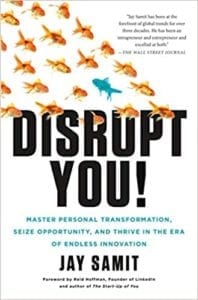
Disrupt You!: Master Personal Transformation, Seize Opportunity, and Thrive in the Era of Endless Innovation
It’s nice to know good background stories. It’s interesting because Wozniak’s parents promoted like his father would sit with him and show how electricity goes to this and why it does that. That helped him. Then I’ve read Elon Musk’s father told him, “You’re not going to amount to anything.” You would think that would inhibit him. Yet you get him saying, “I’ll show you.” You can get different reactions from different kids. It’s fascinating that you’ve patented many things. I’ve had a lot of friends who have tried to patent things. A $100,000 later, they’re wanting to shoot themselves in the head, time, energy and money. Is it worth what you’ve gone through? How much money have you made or lost from doing that?
I’ve got to tell you the old, “If at first, you don’t succeed, try and try again.” Thomas Edison still holds the record for the number of patents. The patents that made him one of the wealthiest. He’s the amalgamation of so many of Elon Musk and many other people, all in one character many years ago. He had lots and lots of patents that went nowhere as commercial successes.
It’s like venture capitalists. You have to invest in a bunch of different things to get the one big thing.
If you’d asked me that question many years ago, I’d say, “I’m not batting so well, maybe a 100 batter at best on return on my inventions.” Starting with the Clamtainer and iterations thereof, it’s multiple millions of dollars of revenue for us every year and with exponential growth. That’s nice and it’s fun to see your stuff at retail, here and there, and go, “That’s cool. I invented that and I see it every day.”
Tell me some of the other inventions you’ve made. I’m curious.
I’ll tell you some of the flops. My first patent I was probably 22 years of age. I’m looking at a pizza box and going, “This is horrendous. It’s a cardboard box. Pizza shows up. It tastes like the cardboard.” It’s cold. We’re in a rural area. It can take 25 to 30 minutes for the pizza to get from the restaurant to you and then it’s like, “I might as well eat the box.” I invented something. It looks like a space saucer that we were going to make and did make out of EPS foam before EPS foam became the devil’s plastic. You and I are both old enough to remember that McDonald’s had that particular packaging where the burger was on one side, the crispy lettuce was on the other side, and the customer put it together. You still got crispy lettuce. It’s not getting cooked by the burger.
We’re going back into the 80s and EPS foam wasn’t going to kill every blue whale on the ocean at that point in time. I invented this pizza box that looked like a flying saucer with circular rings, top and bottom. The pizza, first of all, when you put it in was only being touched by a fraction of the surface area that a cardboard box does. Therefore, because it was only being touched by a fraction of the surface area, it wasn’t giving up contact heat like it would be touching a box. Second, it was an insulated material. Third, you could interstack the boxes. I could take 12 pizzas, interlock the boxes and tip them at a 30-degree angle holding onto the bottom box, and the other ones didn’t slide off. I did a test with a local pizzeria. They thought it was fantastic. I had no marketing. To everybody reading, it is true. You can have the greatest idea in the world. If you don’t have the marketing plan and the marketing people to let the world know about that, it’s going to sit there and die.
One of the things about patents is you can be awarded a patent. Some patents are great. Some patents aren’t worth the papers they’re written on, and the whole range in between. Regardless, if you’re granted a patent, then the patent office and foreign patent offices after that patent are granted, it’s going to come back to you 1, 3 or5 years out and go, “Here are the fees to keep your patent.” They’re not small. They go up as the patent gets older. If you have a patent that doesn’t go anywhere commercially, you’re going to be faced with making a decision “Do I let it drop or not?”
How long did it take you to get the patent usually?
The patent office, since they revised the patent rules under the Obama administration has a fast track and a slow track.
What’s the difference?
[bctt tweet=”Some patents aren’t worth the papers written on them.” username=””]The earlier patents that I got, there was no fast track. You got in line and the typical time back in the ‘90s would be 18 months to 2 years, depending on the complexity of the patent and the workload at the patent office. Since the changes made under the Obama administration with fast track and slow track, I don’t know what slow track is because I’ve done fast track. You pay a bunch more money to go fast track.
It’s like the Disneyland lines.
It is precisely that. One of your readers knows this answer. Let’s say, at 11:59 AM tomorrow, Diane files a patent and chooses the more economical slow track. At 12:00 PM tomorrow, Jay files a patent and chooses fast-track. Jay gets into the patent office first but your patent comes along and it shows that technically you had the idea a minute before me. I believe the way it works is under the old rules. I couldn’t have chosen the fast track. If you and me jumping in at the same time, “You won by a minute. You get it.”
“You paid more now, so you get it.”
I think that’s the way it works. I’m not philosophically okay with that.
I know so many people would do it. I’ve gone through trademarking, the registered trademark. Just that is bad enough because that can come back and go, “Your print material looks like it’s not exactly the same thing as this material.” Is it that kind of stuff where they keep coming back and saying, “You need to prove this and that?”
From somebody that’s been through this process a bunch of times, what you have to prepare yourself for if you go through it the first time is don’t use conventional logic as you read what happens. First off, it almost never happens. It’s like a COVID-19 event that the patent office grants a patent as submitted first round. As I understand it, the examiners can be dinged at the patent office for performance reviews if they grant without enough kickbacks. In other words, it’s coming back to ask for justification. As the inventor, you will read through the objections that the patent examiner has put forth. All of my patents are mechanical. I’ve got design patents but the majority of my patents are mechanical patents, which is what most consumers think of as being a patent like, “It’s a better vacuum cleaner.” I’ll read down through there and go, “This has absolutely no application whatsoever to I’m claiming.” You will have to take that. You need to have a good patent attorney. They fight the fight for you and you pay them big bucks.
How much does it cost to file a patent in general?
It’s a huge range. I can only speak to my experience filing mechanical patents. When it comes to fees and licenses, things you’re going to pay to the patent office to get going, the figure is going to cost you $5,000 to $10,000 to get started. That doesn’t include your lawyer’s fees. When it comes to your lawyer’s fees, now it comes back to, first of all, what’s their rate? Some patent lawyers are good and they charge $250 an hour. There are great patent lawyers that charge $1,250 an hour. The patent lawyer that I started with and I gave him my first patent application as he came out of law school and did his first practice, he was $250 an hour. He was smart, bright and in a big practice, he got to the point when he was down in Atlanta and he says, “Jake, you can’t afford me anymore. All the people around me are pharma and big medical. We’re charging $1,000 plus an hour. Your stuff doesn’t need that.”
Is it typical to spend $100,000 to patent something? My friend created an exercise bar that did this certain thing. He was a physical therapy guy. He created a way to help somebody do it. He thought, “This is great. I’ll patent this.” I remember he was at least $100,000 into it last I heard. I don’t know if he ever got it patented.
Yes. You can easily spend $100,000 on a simple mechanical patent. Here are the factors that are going to drive the expense. First is how unique the patent is. The vast majority of mechanical patents granted are incremental improvements upon existing art and methods. It can become a long, expensive process to prove to the patent office that whatever your incremental improvement is unique to you. That can be a very long, drawn-out process. Frankly, one where to a great extent, how long you keep fighting is determined by how long you’re willing to pay your patent lawyer to try one slightly different angle and take another run at it.

Patents: You can literally have the greatest idea in the world, but if you don’t have the marketing plan, it’s just going to sit there and die.
It’s very similar to what I experienced doing the trademarks. You constantly get the revisions and the lawyers go, “We’re going to file this again.” You start to wonder how do you know if you have a good lawyer or not if he’s making mistakes.
I got family members and dear friends that are lawyers, but it is quite unique than any other profession, even medical professionals. If I go in for a tonsillectomy and I come back out and I still got 70% of one tonsil left, I’m thinking, “You didn’t do your job.”
It seems like you were able to be tenacious enough to find the right lawyers and to do the right things, to do so many patents, and go through everything you’ve done. What are you working on? Are you going to do more?
Yes.
You have this in your blood every year. You come up with something new. What’s next?
It’s a congenital disease. I’m not sure how to cure it.
There’s a lot to fix, so maybe you get a lot more ideas.
I’m working on one but I can’t tell you about that. I’m excited about this.
Is it a vision of the Clam?
It’s another generation of that idea. We’re in a world called thermoforming plastics. I and my competitors, we take a sheet of plastic and then we run it through heaters, a press, a dye cutter and we make lots of different things that consumer interacts with every day. When you go and get a cake to take home to celebrate your husband’s 75th hole-on-one, that container was thermoformed. If you go into the hardware and get a bunch of screws inside that plastic, that’s thermoformed. When you stop by McDonald’s and get your big cup of cafe latte, iced coffee, that’s thermoformed. It spreads across a lot of different industries. Those are the types of things that a consumer is going to be most familiar with. If they look around their car at what’s been tossed in the backseat, they’re going to see stuff that’s made by our industry. All of that stuff is made in a process that’s vertical, as presses are going up and down.
The uniqueness about the Clamtainer is I introduced a closure mechanism that works 90 degrees to vertical, which had never been done in our industry before. When it comes to closing one of our Clamtainers, you close it. It clicks. To open it, you have to depress a lever, which is in the die-cut flange of the clamshell, which releases the pin from the hole. When I’m at trade shows, I tell people, “Here’s the easy way to think about it. When you go home at night, you are getting ready to go to bed, and you lock up the door at night. What do you do? Do you go over to your door and close it, then get some nails, hammer and drive the nails through the door into the door jamb? Then the next morning, when the kids have to get on the school bus, do you go back and pry the nails back out of the door?” They’re looking at me like I’ve lost my mind. I said, “Or do you slide the deadbolt?” You slide the deadbolt.
[bctt tweet=”Unless you get to the top of one mountain, it’s really hard to see how many there are to climb.” username=””]That’s the difference between Clamtainer and everything else in our industry. Everything else, that’s a closure mechanism that’s expected to be able to be reclosed. Cross out the permanently sealed together stuff because once you destroy that container or packaging, it’s done. You’re putting it in trash. All the other closure mechanisms are based upon the concept of the coefficient of friction. It’s a round peg into a square hole or vice versa, a rim lock or a channel compressing together. Newton’s third law, “It takes as much force to pull it back apart as it did to close it.” That’s why when you drop a container of blueberries in the grocery store or when you’re getting them out of your fridge, they explode forcefully because the forces inside that container have overcome the coefficient of friction in the snap blocks or rim lock and violently release all over the place.
Clamtainer is based upon sheer strength. It’s the same concept as a deadbolt into a door. It has nothing to do with the coefficient of friction. It has everything to do with sheer strength, like a bolt in a bridge. In order to get that bolt to fail, you have to sheer the bolt, the same thing with the deadbolt on your door. The only one you’re going to get through that door is to either sheer of the bolt or have the bolt go through the door jamb, but that is easy to close. That’s the brilliance behind this invention and yet it works so well.
I love seeing the containers on your site. It shows very clearly what you’re talking about at JamestownPlastics.com. A lot of people could check that out to see more of what you do. Is there any other site or anything else you’d like to share? This is fascinating, but I think a lot of people like to learn more.
Yes, I would encourage them to go to Clamtainer.com for that product line.
For me, when I heard Clamtainer, I’m imagining a clam-shaped something. In a way, it is because it opens and closes, but it’s not at all what I thought it was going to be. I’m thinking shell. It’s not shell-like. This was very interesting to me to find out all the work that you’ve done. I know a lot of people will want to check it out. This was fun, Jay. Thanks for being on the show.
It’s been an absolute delight. I would love to do it any other time you want to put up with me.
Growing A Human Performance Company With Kyle Valery and Chris Wilke
I am here with Chris Wilke and Kyle Valery, who Cofounded Stretch Affect, which is a human performance company. I’m excited to have you here. Welcome.
Thank you so much.
I was looking forward to this. I don’t do a lot of health-related fitness shows, but it’s an interesting time to be in that industry with everything that’s going on. I figured this is the time to tackle it. I want to get a backstory on you and how you became Cofounders and what led to this. Could I get a little bit of backstory on you?
Chris and I both started in strength coaching. We’re doing this for many years now. We ended up through our educational paths, finding voids in some of the ways that we could affect and help our clients. That started directing more of our educational path because we both have undergraduate degrees in Exercise, Science, or Nutrition. I have a Master’s Degree in Exercise Science, emphasis on Sports Psychology. We found out that we had limitations with some of our clients that we couldn’t address, take care of or managed. We would usually refer out to other individuals to do that. Sometimes that went well and sometimes it didn’t go well. We decided to see if there was a way that we could intervene. We chose a path. At this point, we had families, so we couldn’t stop the train and go to PT school or chiro school, which probably would have been a good thing if we had done it like a decade earlier.
We ended up going to massage therapy school, which still gives you a license to touch, but it also gave us the ability to access high-level certifications like active release techniques and some of these more technical manual therapy skills that you need to be able to do interventions with some of the limitations that our clients would have. We went down that path. Even in that world, we started seeing some deficiencies with some of the systems that PTs would have that certain things would be good and be limited, same in the chiro world, our strength and conditioning. We became this system of systems that likes to take from a little bit of all of the above and have more of an inclusive approach as opposed to what would be more traditionally very separatists.
My background is somewhat medical from working in pharmaceutical sales. My husband’s a physician and my study of emotional intelligence, different psychological aspects, and having had Albert Bandura and these great psychologists on the show. It’s interesting to look at the things that combine to make you completely effective in any kind of setting. You’re working with people, not necessarily hiking mountains. They’re trying to get back to feeling good. How are you doing that with COVID? How has this impacted you?
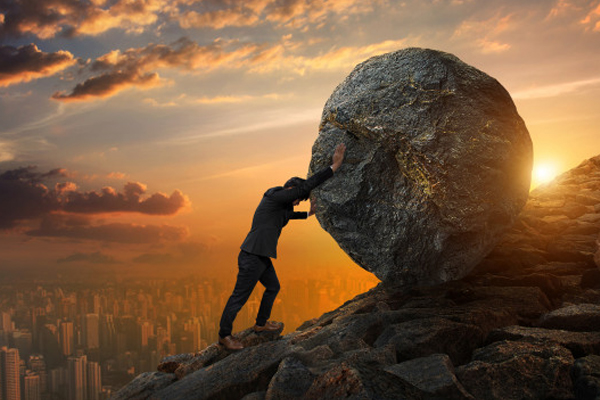
Patents: The people that are really motivated are the ones that tend to be a little bit more driven to push themselves.
The people we work with have all goals. From climbing mountains to other stuff, we don’t necessarily try to pigeonhole ourselves into any certain category. It’s about optimizing human performance on an individual basis. As far as the COVID stuff goes, our loyal client base, we did not even know how much we had to do in the business development side of things until all of this happened. We were supposed to start our lease in March of 2020. We signed the contract and we were supposed to start in April 2020. You can imagine how shocking as things developed that was to us. We had an out in terms of the brick and mortar. We chose to put our heads down and move forward because we were so confident in what we were doing.
We already had members that we were able to move forward with. Because we do medical massage and physical therapy, we were able to stay open. It allowed us to slowly develop our system, which is not even close to being complete yet, but that’s what Kyle alluded to is this ever-growing organism. Unless you get to the top of one mountain, it’s hard to see how many there are to climb. We were able to do that to a degree when it comes to the fitness side of things and delivering that product. We got to the top, and we realized we need a lot more help and a more comprehensive system. Some of the downtime during the beginning of quarantine allowed us to fine-tune some of the ways we did things and build up the business side. That was fortunate for us because we needed that time to gather our thoughts and develop the foundation for growth.
Where are you located?
We’re in San Diego.
I know that a lot of people are doing things virtually. If you’re dealing with some of this wellness performance, stretching things, are you doing things virtually at all? Are you looking into franchising this? I’m curious what you see for some of the potentials for this.
Yes, to all the above. Virtual is for sure a thing and we have some online courses that we do that can be coached mediated or more user-driven. We also have an app that is in development that uses the cameras on the phone to detect a range of motion. On the range of motion limitations, it would recommend specific corrective interventions. That’s something that we’re probably months away from having a little bit more formidable.
On the virtual side of it, based on different people’s comfort levels with COVID and the circumstances there within, we had some hybrid clients that were virtual the whole time. We’re doing virtual mobility and stuff of that nature. We saw a need to have a more robust offering that was more tailored to different criteria. We started to build out courses that are more relative to an application. Golf is one of the main ones that we’re driving, we have cycling and we might even fancy ourselves in some pickleball.
In some ways, the hard part is trying to find a window into helping people. When you tell someone, “We want to help you reduce your discomfort while you’re sitting at your desk and stuff,” many people don’t care about that as much as they do about being able to get out there and do what they love well at a high level. Initially, we came into this thinking, “We’re going to come up with these programs to help people, so they don’t have many injuries, pain and tension, reducing productivity at work.” We find that people’s motivations are a little bit different. When they’re at work, they want to focus on work when they’re doing their activity. That’s what drives them and makes them feel alive.
We hope to influence all of it. The people that are motivated are the ones that tend to be a little bit more driven to push themselves, to embrace what we’re trying to teach them and more of a growth mindset. You’ve got to be willing to struggle and persevere a little bit and learn. That’s one of the big things that we do focus on. It’s not telling you what to do, but you are understanding why you’re doing what you’re doing.
I could see the potential for this and use it with Quest 2 and Oculus software or something. Have you looked into the virtual reality aspects of this?
We have not delved into that conversation fully. We’re taking our step-by-step. Something along those lines with VR would be on a whole other level.
[bctt tweet=”Having a growth mindset is about being willing to struggle and persevere a little bit and learn.” username=””]A show that I aired was with one that was creating an education platform for kids to learn about Math, being emerged in this different world. It feels surreal. It’s almost Star Trek Holodeck to me.
Have you ever used one of the Oculus?
Yes.
They’re super interesting. It is very immersive for sure.
I could see that, especially something with stretching where you can feel the person. You’re following them right there. You can see every angle. It seems like there’d be a big potential for that. I’m looking forward to the day where they make it more glass-sized for your head and not huge. You go to stretch and you fall over because your head is so big. It seemed like a lot of people tell me they wrestle with restless legs and difficulty sleeping. That, to me, seems like a stretching-related thing. Do you get a lot of those kinds of things that you’re dealing with? What are the main issues people come to you for?
You could argue that. There are usually two tracks that people usually come in on. One of them is pain or discomfort, or performance. On the pain side, you can see the full gamut. It is in the relative or you’re going to have certain things that you see for golfers, baseball, runners or office worker. On the performance side, it’s more like we’re part of a team approach with most of those people. They usually have some strength coach, a swing coach or a coach relative to their sport if they have a running coach or something like that. We would be more of the body coach. Our goal in that facet is to see where there’s more potential. Sometimes people have dysfunction that’s non-painful. Athletes are ultimately the best movers. They’re also the best compensators. You can look beautiful doing something, but you may be limiting your true potential and creating some limitations down the road.
I’m imagining Charles Barkley’s golf swing.
He was training for a different sport for most of his life.
I bet he gets to that golf ball much further than anybody I know.
It’s getting people and giving them the tools and resources, they need to be successful long-term and having them more educated about their body are a huge component of what we deliver to people in addition to effective outcomes because this is something that people can keep with them as they move through their life.
Where does the Psychology part come in?
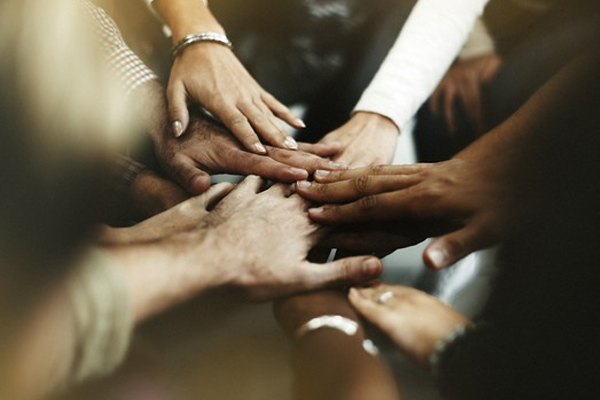
Patents: Support those that are working for you because that’s the only way they can truly be the best versions of themselves and therefore help our people.
The biggest thing is finding what people’s value systems are based on because their behaviors are all going to be derivative of that. Once you can see what someone is passionate about, something that they care about, we have to tie the process back to that in some form or fashion. Ultimately, a majority of what we’re doing is behavior modification, relative to our world more than anything else and building that into a lifestyle that’s managed for them.
Kyle and I both did well and why we are in alignment is that when we first started talking about how to go about this, it has to do with who the individual is rather than what body parts they have and all of that because it’s irrelevant if they’re not motivated to follow the plan that you’ve laid out for them. Our goal is to help people improve their physical or movement literacy. That’s like me telling you, “We want to help you improve your financial literacy.” You’re like, “It doesn’t sound that sexy to me.” If you say, “If I show you exactly what you’re missing in terms of investing, spending, budget,” then I attach that, “Your goal is to buy a boat in ten years and this is going to get you there in five if you do it.”
I’m thinking about the nutritional aspect of it from my background. Is it still low carb? Is the fat good this week? What is it this week?
It is week by week. That is one of the things that we also address, too. We also work with some naturopaths to do some genetic testing, food allergy testing and other things relative to that because low-grade inflammation can wreak havoc. Dehydrated tissue doesn’t become supple or stretch, be manipulated well, or adapt to new environments. Generally speaking, if we’re going to do generalizations because most of these conversations relative to diet are that, we would be low gluten to no gluten, little to no dairy, limiting refined sugars and making sure we have hydration. We do this program with something called Fill it Forward, which essentially is a tracking system, a barcode that you can put on your bottle that you scan with your phone after every time you drink it. It measures it but then it also donates to a clean water project.
Promote healthy habits.
We have another one that’s local, called Vizer that essentially after somebody gets done with their appointment, they can scan it, and it’ll donate food to the San Diego Food Bank. We try and tie in the emotional, in the heart, and tie it all in. We also try and tie in experience. We like to try and make it enjoyable and have people laugh, have a good time and not to have such a stark environment for individuals.
I like the competitive gamification factor. If you’re dealing with athletes or people who are trying to be high-performers, they’re going to want that.
This is where we’re going to ask a lot of you, but we’re going to give you a lot of avenues to be successful within that. That’s the point. That’s why a lot of our clients are members. We do have a lot of drop-in people as well, but ultimately membership is a majority of who we are. That’s the other thing too. When we talk about our program, what our program is and why somebody would stay with us, it’s that it is an evolving program. That’s the same with information.
One of my favorite certifications I took, he goes, “Half of what I told you five years from now will probably be wrong.” It’s always changing. What we do now is not what we will do in the future, but we always do the best we can do every day. Ultimately, it is an evolution and it is something that we want to try and challenge ourselves from an information bias to also our clients and what their limitations and willingness is also.
I teach a lot of courses still and one of the courses I’m teaching at the moment is at a technology school that the students have to come up with a company and product idea. Here’s your company where you said you were considering the franchise of aspect for the future. What’s your biggest challenge going that way?
Brick and mortar is always a challenge and people. If you look at franchises, the ones that have been successful, the Orangetheory now that has been emerging, CorePower Yoga, to stay on the wellness spectrum. It’s not necessarily about compensating your people the most. Therefore, your margins can be relatively high for the owner of the franchise. It contradicts our values. We believe in supporting those that are working for us because that’s the only way that they can truly be the best versions of themselves and, therefore, help our people. That’s the tricky part. It’s developing the system where you have at least one very high-quality coach practitioner that’s leading the charge and has the capacity to educate everyone else in-house so that it can be profitable.
I’ve had a lot of franchisee companies and different people that have expanded in different ways on this show. You just learn so much through doing. You are in San Diego. Are you working with outside of San Diego customers or are you sticking strictly there?
[bctt tweet=”Athletes are ultimately the best movers, and so they’re also the best compensators.” username=””]In the virtual world, yes, outside of Diego. That’s one of the things that when you talk about a franchise with our values, it makes sense because you could have a brick and mortar, you can have some high-quality people in that brick and mortar, and then that could be their home base. Then you can have an extension of that services this greater online community. Then have real assets through apps and stuff that they can sell. It’s about the package and diversifying revenue streams. For us, is it better if you come in? Sure, totally. We get to put our hands on you, feel tissue, do different things. We have clients in China, Dubai and all over the world.
It had very positive outcomes but you do have to change the way you coach. You have to change to make sure the videos that you have access to them. We have like over 1,000 videos filmed and are only filming probably six hours a week. This is our beta space and as our space grows, we’ll have a more devoted section of that to filming and online coaching. We have to shut down our facility or use it off-hours to be able to do some of that.
We understand that the future is digital and for us also as a practitioner, if you think about the people who are in this industry, when they’re doing manual therapy all day, every day and have their hands with clients, that’s very laborious and intensive. You’ll usually see the life expectancy of these people be very short within the industry and they lose their luster for it. If you can have a dynamic position that allows them to do online coaching, small group, one-on-one table work, their life expectancy doubles or triples. We’re solving a lot for the practitioner in this case as well to live a healthy financial life, to have a healthy body through a work experience and also for the consumer at a high level as well.
It sounds like you have an amazing idea behind this. There are many people who are injured in pickleball and different things because a lot of people don’t know how to do it properly. Younger generations are eager for a lot of this. Even with the Peloton success, you can see that people love this stuff. It’s a market to be in. A lot of the readers will want to know more about how they can follow you and find you. Is there a link or something you’d like to share?
Our website is StretchAffect.com and there’s StretchAffect.com/golf. We will have to pickleball. It’s not there yet. On Instagram, we’re @Stretch_Affect. If you type in Google, you should be able to find us if our marketing company is doing their job right.
It looked like you had some good sites going out there and it was fun to talk to you about it. Thank you so much for being on the show.
Thank you so much. We appreciate it.
—
I’d like to thank Jay, Kyle and Chris. It’s such a great show. We get so many great guests on this show. This has been so much fun. I hope you enjoy this episode. I hope you join us for the next episode of Take The Lead Radio.
Important Links:
- Jamestown Plastics
- Stretch Affect
- Clamtainer
- Dr. Gary Witt – LinkedIn
- Disrupt You!
- Disrupt Yourself
- Albert Bandura – Previous episode
- Fill it Forward
- Vizer
- San Diego Food Bank
- Orangetheory
- CorePower Yoga
- Peloton
- StretchAffect.com/golf
- @Stretch_Affect – Instagram
About Jay Baker

About Kyle Valery and Chris Wilke
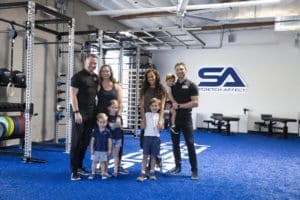
Chris Wilke co-founded Stretch Affect, a human performance company. Chris is highly motivated to inspire a more movement-based lifestyle that promotes self-awareness and resiliency. He believes that everyone should value their own health and strive to find coaches, mentors and practitioners that will guide them to the best version of themselves. Chris has been fortunate to work with many athletes of all levels and other high achievers over his career and loves the challenge that a new body can present.
Love the show? Subscribe, rate, review, and share!
Join the Take The Lead community today:

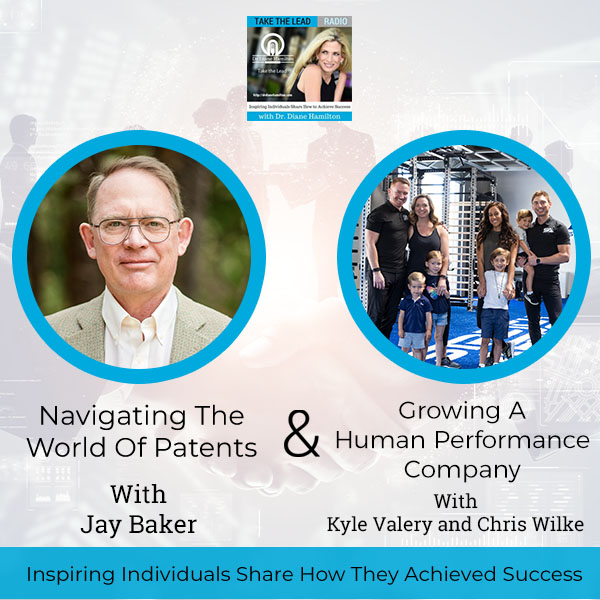
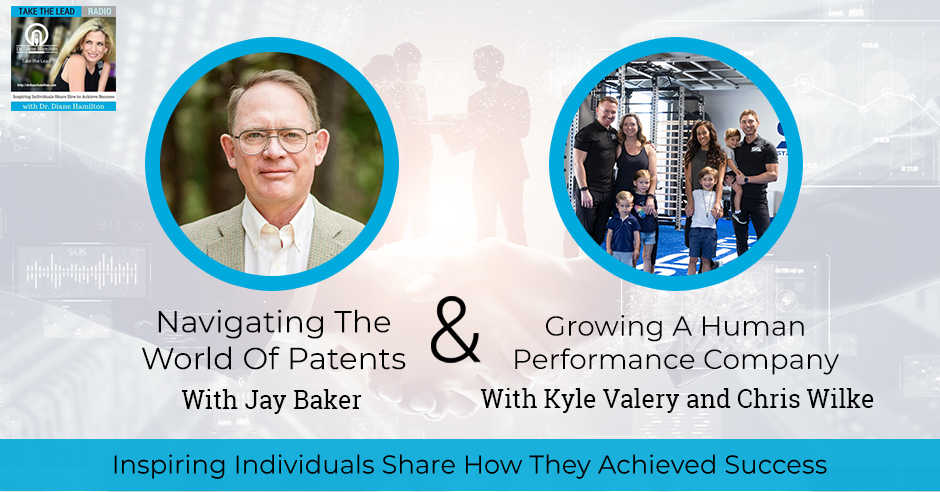
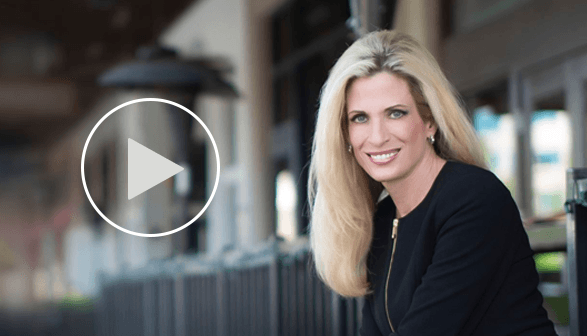
0 Comments